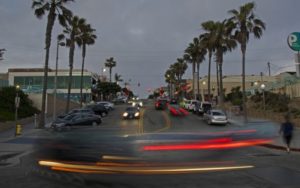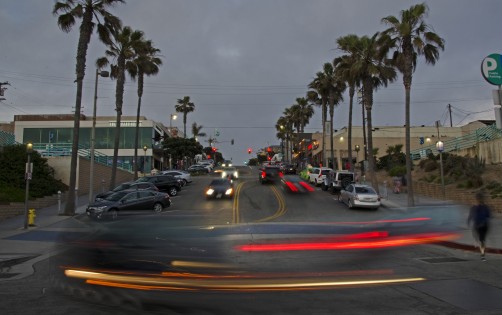The end of daylight saving time—on Nov. 4 this year—could create a more dangerous evening commute for people on foot, as darkness falls earlier and drivers find it harder to see on the road, says a Cedars-Sinai trauma physician.

“Pedestrian safety is a serious issue, especially at dusk during fall, when drivers are dealing with adjusting to the diminishing light and the glare from headlights and streetlamps, amongst other distractions,” said Nicolas Melo, MD, a trauma surgeon at Cedars-Sinai.
“Every day, we see at least one or two people who require surgery after being hit by a vehicle, with everything from bone fractures to serious head and internal organ injuries. In my experience, rush hour tends to be the peak time for these types of auto-pedestrian injuries,” Melo said.
According to statistics from the Cedars-Sinai trauma database, more than 800 pedestrians have been admitted with injuries from being hit by cars since the beginning of 2017.
Throughout the Los Angeles area, the trend is also worrying: The number of pedestrian deaths rose sharply from 74 in 2015, to 134 in 2017, the highest in more than 15 years, according to the City of Los Angeles Department of Transportation. In fact, L.A. County now has the most pedestrian deaths in the country, according to a preliminary report from the Governors Highway Safety Association (GHSA).
Population increase, driver and pedestrian distraction, and the rise of Angelenos walking and using public transit could all play a role, said Brett Dodd, RN, the trauma education, injury prevention and outreach coordinator at Cedars-Sinai.
This is exacerbated by the end of daylight saving time, as earlier sunsets and darkness have been linked to increased numbers of pedestrians killed on the road. Across the nation in 2016, 75 percent of deaths on the road occurred after sunset, according to the GHSA report.
The issue of “falling back” will come into the spotlight on Nov. 6, when voters go to the ballots on Proposition 7, which would establish permanent, year-round daylight saving time. A 2004 study published in Accident Analysis and Prevention found that adding an hour of sunlight in the evening year-round would save the lives of more than 170 pedestrians a year.
But Melo warned against drawing conclusions from these statistics, as many factors come into play in auto-pedestrian accidents. “In theory, an extra hour of daylight at the end the day, when people are commuting or walking home from school, could help reduce pedestrian fatalities,” said Melo. “But permanent daylight savings would also lead to darker mornings, when there is just as much traffic with kids going to school, so it could simply put a different segment of the population at risk.”
Regardless of the ballot results, both drivers and pedestrians should be proactive when it comes to safety, said Melo. Pedestrians, for instance, should avoid crossing the middle of the road or between cars, and should avoid using cellphones or wearing earbuds or headphones when crossing streets, especially in traffic. Melo’s key advice for pedestrians during the dark fall and winter months: Pretend you are invisible.
“My advice is to assume that you won’t be observed—wait an extra second before stepping out,” he said. For their part, drivers should always look out for difficult-to-see pedestrians.
“Being vigilant is really the best method of prevention,” said Melo. “If you’re out on foot, walk facing traffic and make sure you’re visible to drivers when coming around corners. For both pedestrians and drivers, staying focused is key.”
Source: Cedars-Sinai
Was this article valuable?
Here are more articles you may enjoy.


 ‘Dream Is in Sight:’ Chamber, Reinsurers, Insurers Urge Florida to Stay the Course
‘Dream Is in Sight:’ Chamber, Reinsurers, Insurers Urge Florida to Stay the Course  Thailand’s Record Floods Paralyze Key Hubs for Tech and Car Parts
Thailand’s Record Floods Paralyze Key Hubs for Tech and Car Parts  Truckers Who Fail English Tests Get Pulled Off Roads in Trump Crackdown
Truckers Who Fail English Tests Get Pulled Off Roads in Trump Crackdown  Standard Chartered Settles $2 Billion Iranian Sanction Suit in London
Standard Chartered Settles $2 Billion Iranian Sanction Suit in London 